Mad Hedge Biotech and Healthcare Letter
June 18, 2024
Fiat Lux
Featured Trade:
(PHARMAGEDDON AVERTED)
(ILMN), (NVTAQ), (NTRA), (GH), (EXAS), (TMO), (QGEN), (NVS), (RHHBY), (AZN), (CRSP), (EDIT), (FATE)

Mad Hedge Biotech and Healthcare Letter
June 18, 2024
Fiat Lux
Featured Trade:
(PHARMAGEDDON AVERTED)
(ILMN), (NVTAQ), (NTRA), (GH), (EXAS), (TMO), (QGEN), (NVS), (RHHBY), (AZN), (CRSP), (EDIT), (FATE)

For far too long, we've been playing a dangerous game of biotech roulette - throwing our hard-earned dough at stocks solely based on who's peddling the latest drugs and vaccines to the biggest crowds.
We tiptoe around those dreaded "patent cliffs", living in fear of the moment our cash cows turn into generic, discount-bin duds overnight.
As I've loudly proclaimed before, Big Pharma is fundamentally a tightrope act - milking those lucrative exclusives for all they're worth while bracing for the inevitable day those monopolies go kaput.
It's an anxiety-inducing cycle, one that's been running the show for decades.
But enough is enough. It's high time we tossed that musty old playbook straight into the trash. Why? Because the reign of Pharma's legacy model is fading faster than my hairline.
A new revolutionary force is taking over – personalized medicine.
Don't kid yourselves, this tectonic shift is the real deal. We're witnessing a paradigm upheaval in how drugs are developed and treatments are administered.
Advanced, genetically-tailored therapies are muscling their way to the frontlines, employing each patient's unique DNA blueprint to craft bespoke care strategies like never before.
Leading this charge are gene sequencing pioneers like Illumina (ILMN), equipping healthcare with bleeding-edge tech for genetic profiling and research.
Companies like Invitae (NVTAQ) and Natera (NTRA) are making genetic intel accessible and actionable for diagnosing and treating inherited nightmares like cancer and heart disease. This isn't a drill, people. It’s the new reality.
But the innovation train doesn't stop there. Guardant Health (GH) is upping the ante with its non-invasive blood tests that capture tumor genetic data, allowing physicians to map treatment plans without those pesky, invasive procedures.
And let's hear it for Exact Sciences (EXAS), championing molecular diagnostics to laser-focus cancer regimens based on each person's biological fingerprint.
Speaking of cancer, we'd be remiss not to spotlight the game-changing progress happening on the personalized medicine front.
At the latest American Society of Clinical Oncology shindig, the best oncology minds showcased their latest advancements in tailored treatments.
Get this – over the last four years, over a third of the FDA's new drug approvals were personalized meds. With the White House doubling down, those numbers are only going up.
Obviously, personalized medicine is this century's gold rush. In fact, a global biopharma race is already underway, and everyone’s practically frothing at the mouth.
After all, this half-trillion-dollar market is barreling towards the $1 trillion mark by 2031.
And in this blossoming field, outfits like Thermo Fisher (TMO) and Qiagen (QGEN) are indispensable, provisioning crucial tools and services.
Thermo covers the full genetic research and diagnostics gamut, while Qiagen specializes in sample prep and molecular testing – two linchpins for delivering personalized therapies.
But it's not just the upstart trailblazers making waves. Biotech titans like Novartis (NVS), Roche (RHHBY), and AstraZeneca (AZN) are going knees-deep into advanced, commercially-viable personalized treatments – especially in oncology, where understanding Individual genetic mutations can literally mean life or death.
Let's pour one out for the real pioneers here, too – groundbreakers like CRISPR Therapeutics (CRSP), Editas Medicine (EDIT), and Fate Therapeutics (FATE).
These mavericks are lighting up the gene editing and cell therapy arenas, hand-crafting hyper-personalized treatments that smite genetic diseases at the source.
Now, for those of you eagerly wondering where to splash your investment cash, I suggest you don't fall into the trap of banking solely on the next patented "winner" therapy.
Those old-school patent monopolies that once ruled the roost? Their significance is waning rapidly.
With the flurry of personalization tech out there, it's a Wild West – one company churns out a new treatment, another can swiftly follow suit.
Patent feuds and skyrocketing costs loom on the horizon like storm clouds. The gravy train of eternal patent profits is running out of steam.
But make no mistake, this arms race isn't cooling off anytime soon. The battleground's scope is simply shifting. It's no longer just about formulating the latest miracle drug – it's about delivering unbeatable services and customer experiences.
Because here's the cold hard truth – the biggest roadblock to getting these revolutionary therapies to patients is obtaining all the genetic data and personal insights needed to make it happen.
Healthcare providers are going to need to invest heavily in new data management systems, training, and education just to keep pace with these rapidly evolving personalized meds.
The pharma players that thrive? They're the ones going beyond prioritizing drug development to obsessing over best-in-class customer service and care delivery.
They'll cement customer loyalty, forge lasting partnerships – and in doing so, actualize personalized medicine's boundary-shattering promise. Those are the winners I'm betting big on.
So wake up and smell the coff-gene. The personalized biotech goldrush is kicking into high gear.
And those wise enough to stake an early claim? Well, let's just say they'll be dishing out more than genetics-guided therapy – they'll be minting a new generation of biotech fortunes.
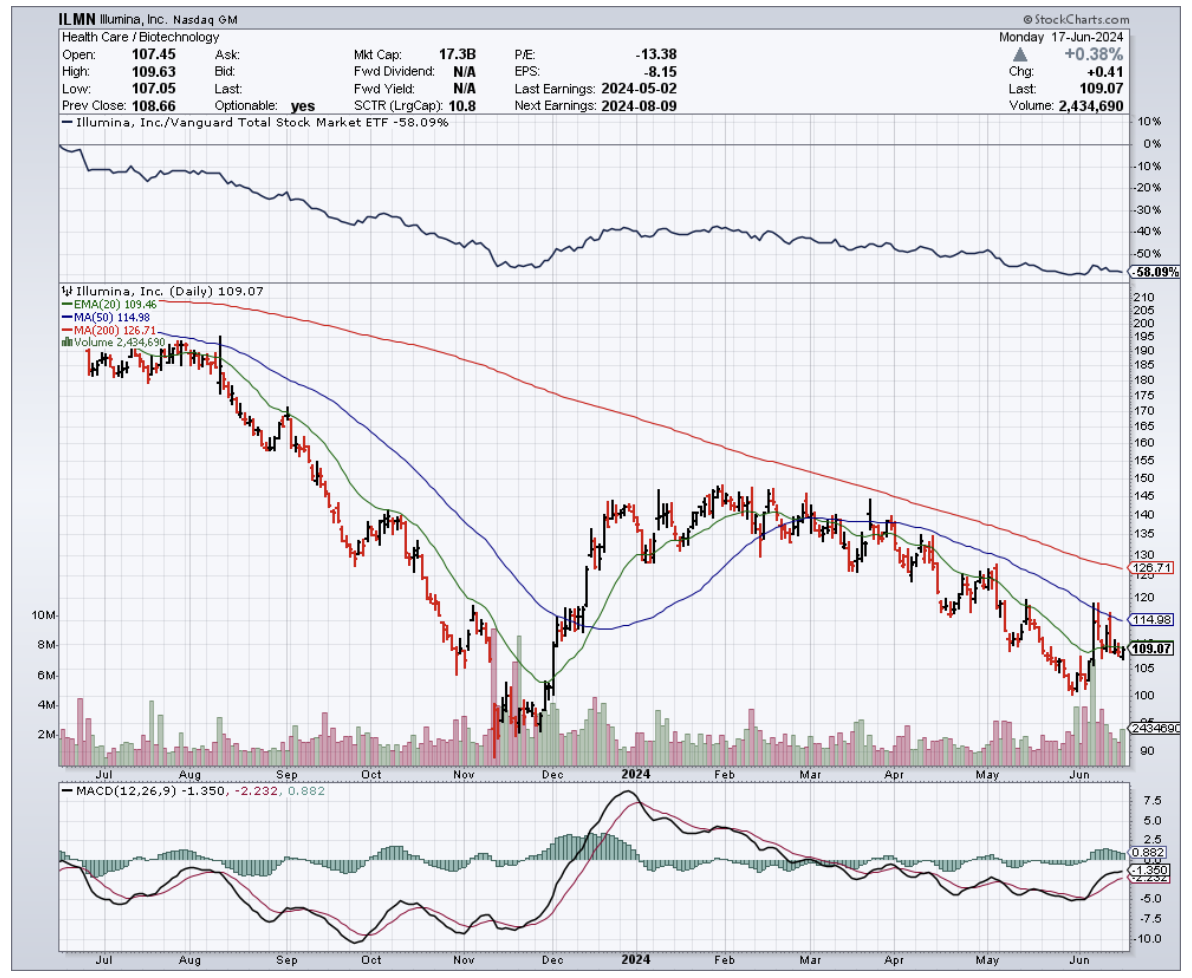
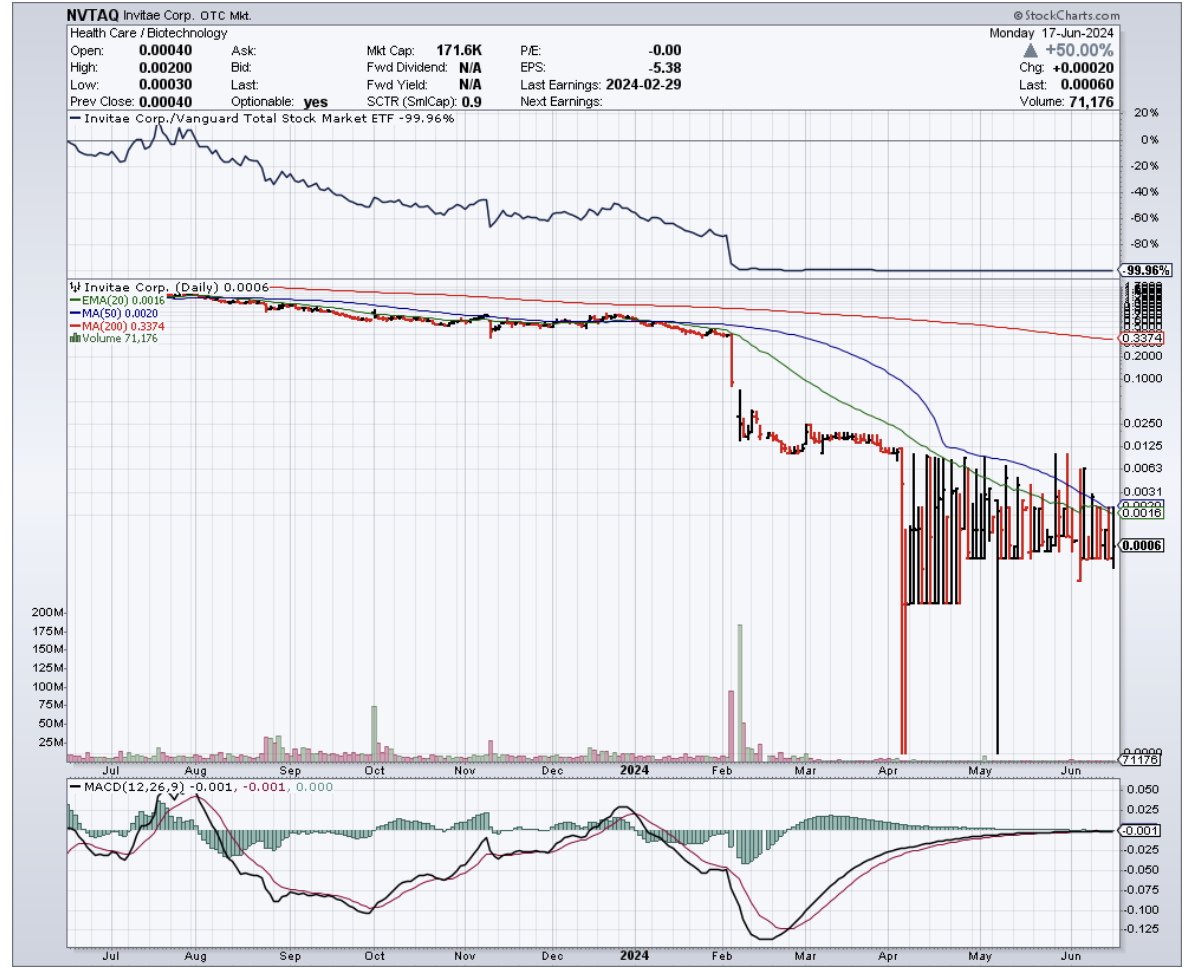
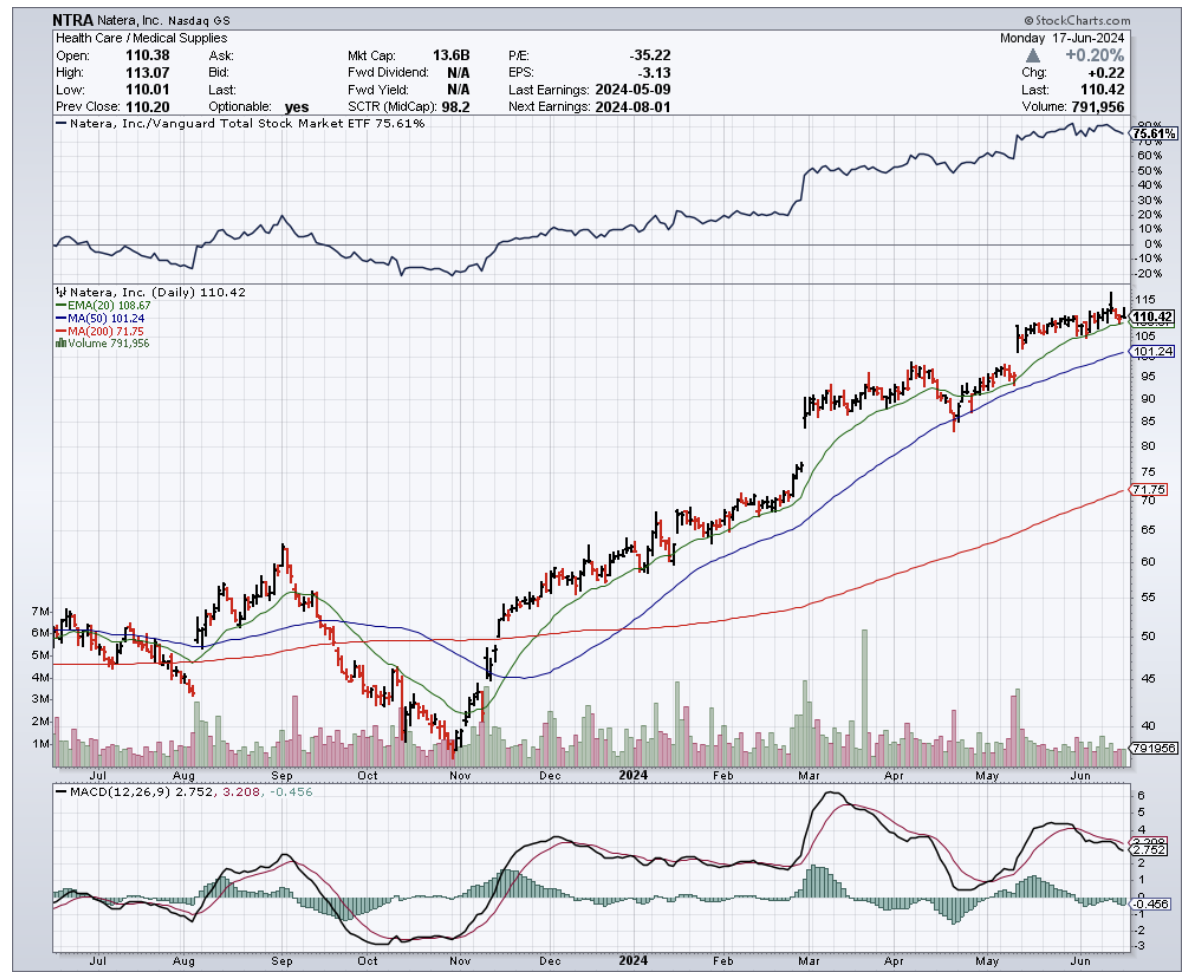
Mad Hedge Biotech and Healthcare Letter
May 28, 2024
Fiat Lux
Featured Trade:
(GET YOUR GEIGER COUNTERS READY)
(NVS), (LLY), (BMY), (AZN)

Hang on to your Geiger counters because we're about to dive deep into the world of radiopharmaceutical therapy. I bet even Marie Curie would be impressed by the mind-blowing leaps we've made since her ground-shattering discoveries a century ago.
Now, don't get me wrong, she's a tough act to follow. But the big guns in pharma have taken up the challenge, piling up billions on the roulette table of targeted radiopharmaceutical therapy.
And from where I'm sitting, the odds are looking pretty darn exciting.
Just picture the scene: Radiation that directly takes the fight to those nasty tumor cells, like a microscopic missile strike that zaps cancer cells while ignoring the innocent bystanders.
How? By hitching a radioactive particle to a targeting molecule - think Uber, but for cancer therapy.
This healthcare game-changer, dubbed radiopharmaceutical therapy is projected to become a whopping $25 billion goldmine.
Forget the clunky radiation therapy your grandparents endured – this is precision, it's innovation, and it could potentially enrich your investment portfolio.
Actually, everyone seems to be piling into the radiopharma race. Experts say we're merely at the start line and these next-gen technologies could bring a windfall.
Evidence? The recent flurry of acquisitions, with no less than four deals being sealed just these past months.
Now, let's put some names to this game.
Novartis (NVS) is leading the pack with two radiopharmaceutical showstoppers under its belt. With their drugs Pluvicto and Lutathera, they're forecasted to rake in a whopping $5 billion by 2028 – that's more zeros than I can count on two hands.
Not just resting on their pile of success, they've scooped up Mariana Oncology in a $1 billion deal. This strategic move solidifies Novartis' dominion in the radiopharmaceutical arena – and you can quote me on that.
Inspired by Novartis' success, other pharmaceutical titans are catching the FOMO fever.
Eli Lilly (LLY), for instance, handed over $1.4 billion to acquire Point Biopharma and its promising radiation drug, PNT2002.
The investors’ darling this year with a near 38% surge in stock price (thanks to the overwhelming success of its obesity drugs), Eli Lilly is set to maintain its upward trajectory by venturing into the radiopharmaceutical space.
Bristol-Myers Squibb (BMY) isn't about to be left out of the radiopharmaceutical race either.
They ponied up a cool $4.1 billion for RayzeBio, snagging a promising pipeline of treatments. One standout is RYZ101, a late-stage targeted radiopharma therapy already making waves in trials for gastroenteropancreatic neuroendocrine tumors and small-cell lung cancer.
This acquisition followed closely on the heels of their $14 billion buyout of schizophrenia drug developer Karuna Therapeutics. Clearly, they’re feeling the heat as patents on some of their older cash cows are set to expire.
So, sure, BMY’s stock has been a bit sluggish lately, but this radiopharmaceutical gamble could be the shot in the arm they need.
And the acquisition spree doesn't stop there. AstraZeneca (AZN) also dove headfirst into the radiopharmaceutical pool, shelling out $2.4 billion for Fusion Pharmaceuticals in March.
Fusion's pipeline, including their Phase 2 candidate FPI-2265 for metastatic castration-resistant prostate cancer, adds another potential blockbuster to the mix.
Meanwhile, several biopharma companies are still standing tall, catching the eye of investors.
In fact, the venture capital poured into radiopharmaceutical drugs surged to $518 million last year, a cool 722% increase from 2017.
The race isn't slowing down anytime soon either. Researchers are exploring the use of radiopharmaceuticals alongside other treatments like immunotherapy, and even envision a future where this technology could be applied to any cancer, including ovarian, breast, or brain tumors.
And with only two products currently in the market, the potential for growth in targeted radiotherapies seems almost infinite.
So, I'll say it one more time – get your Geiger counters ready. The radiopharmaceutical revolution is just getting started, ladies and gentlemen. It’s time to zero in on this hotbed of innovation and watch your investments go nuclear.
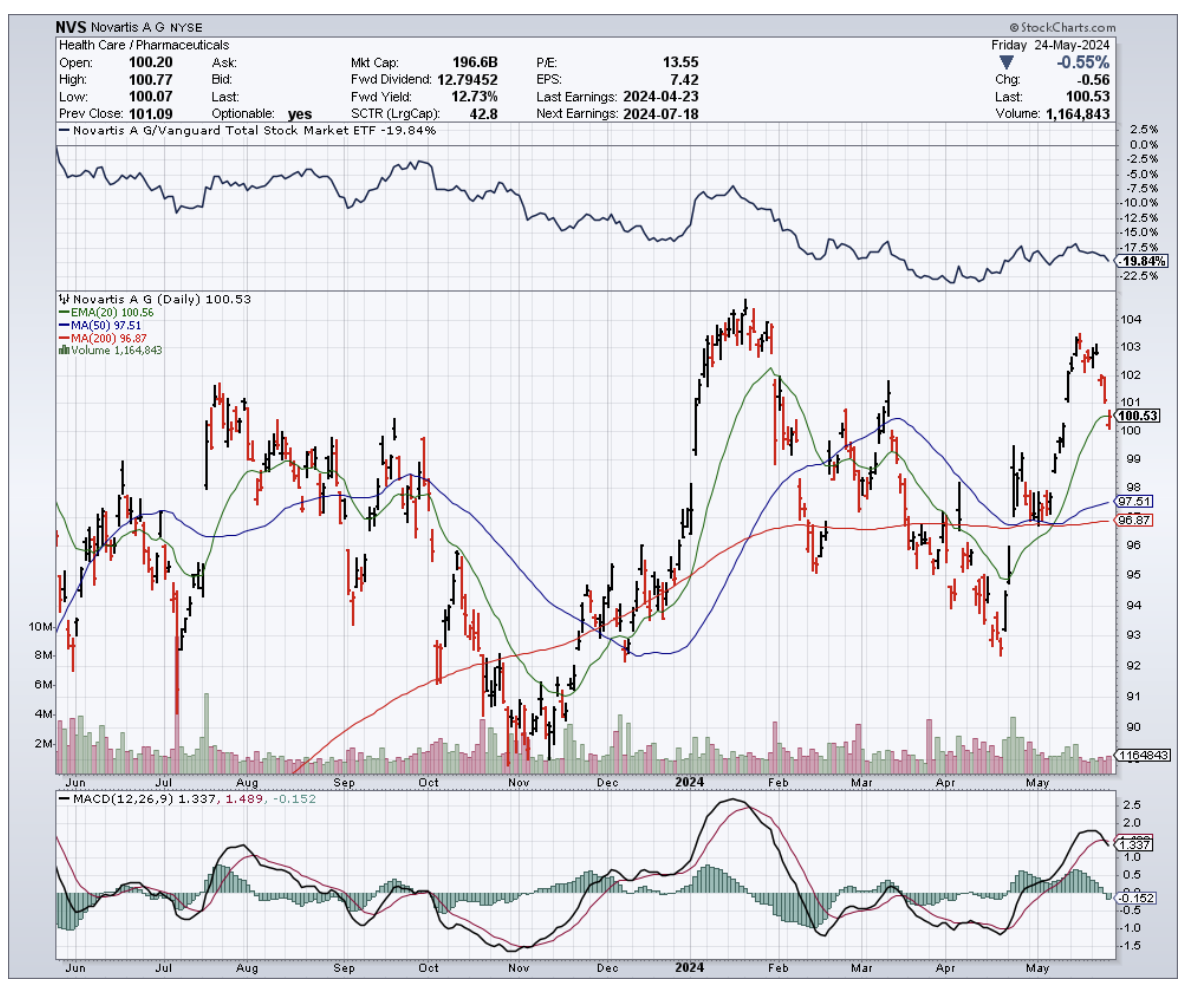
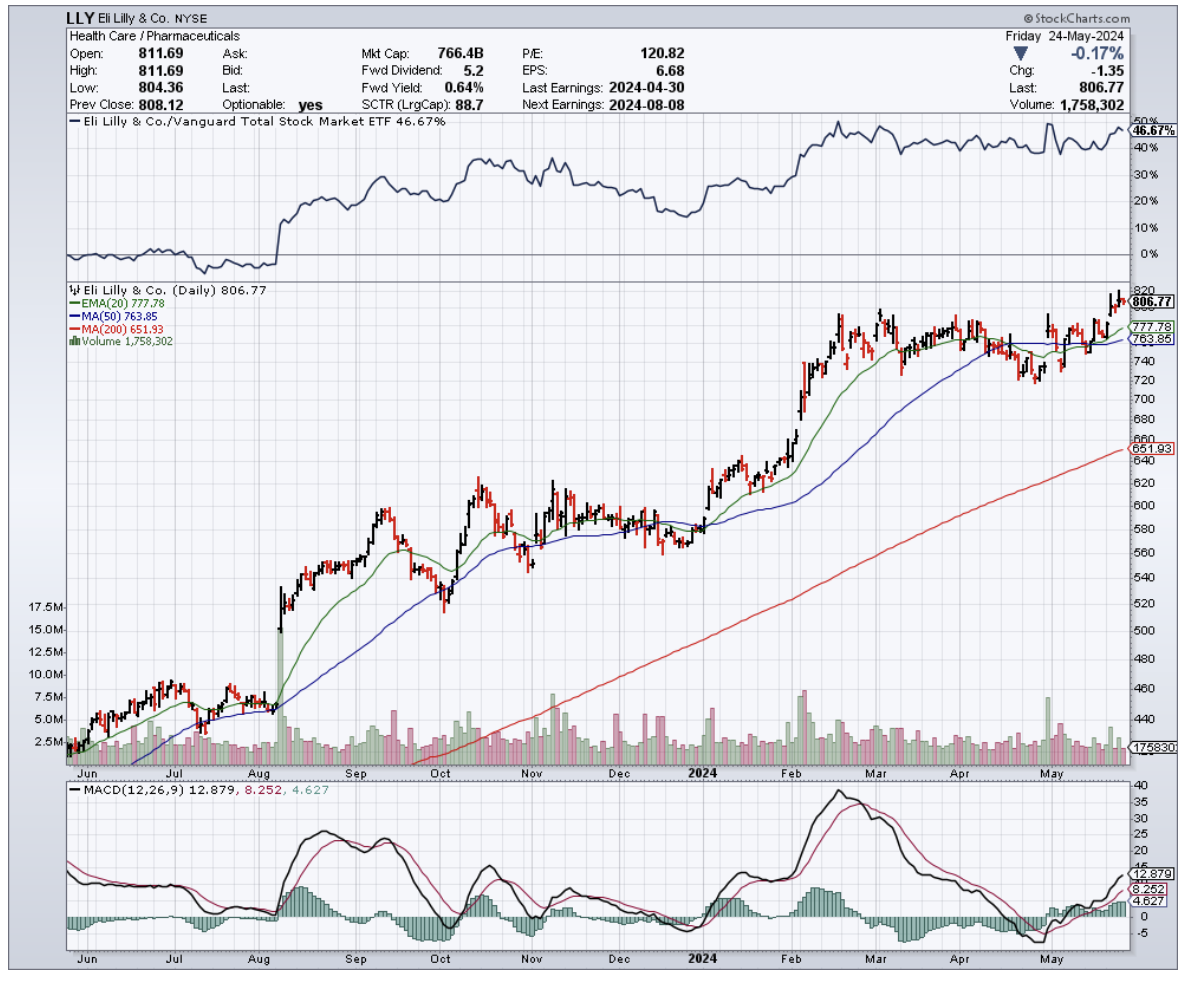
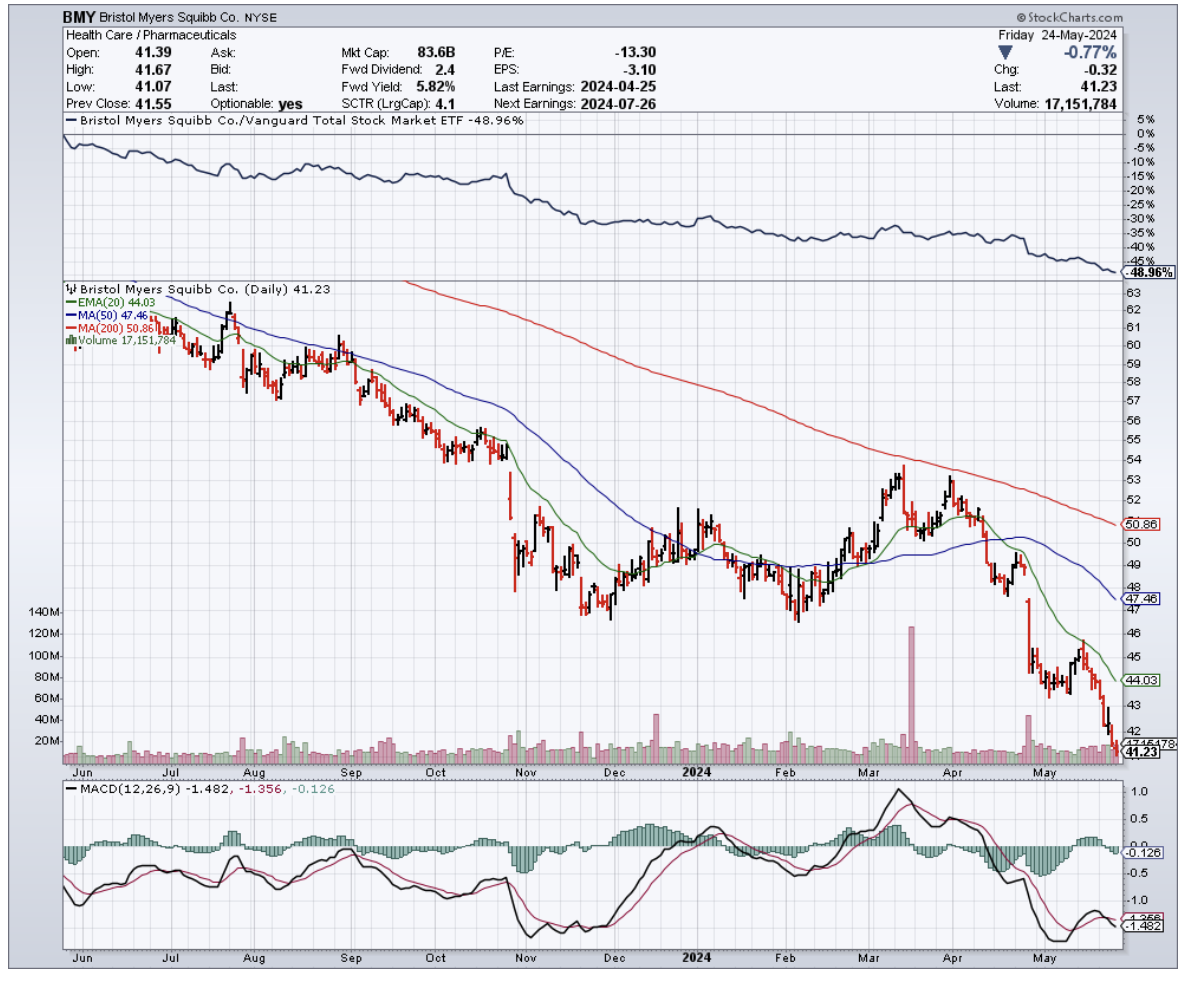
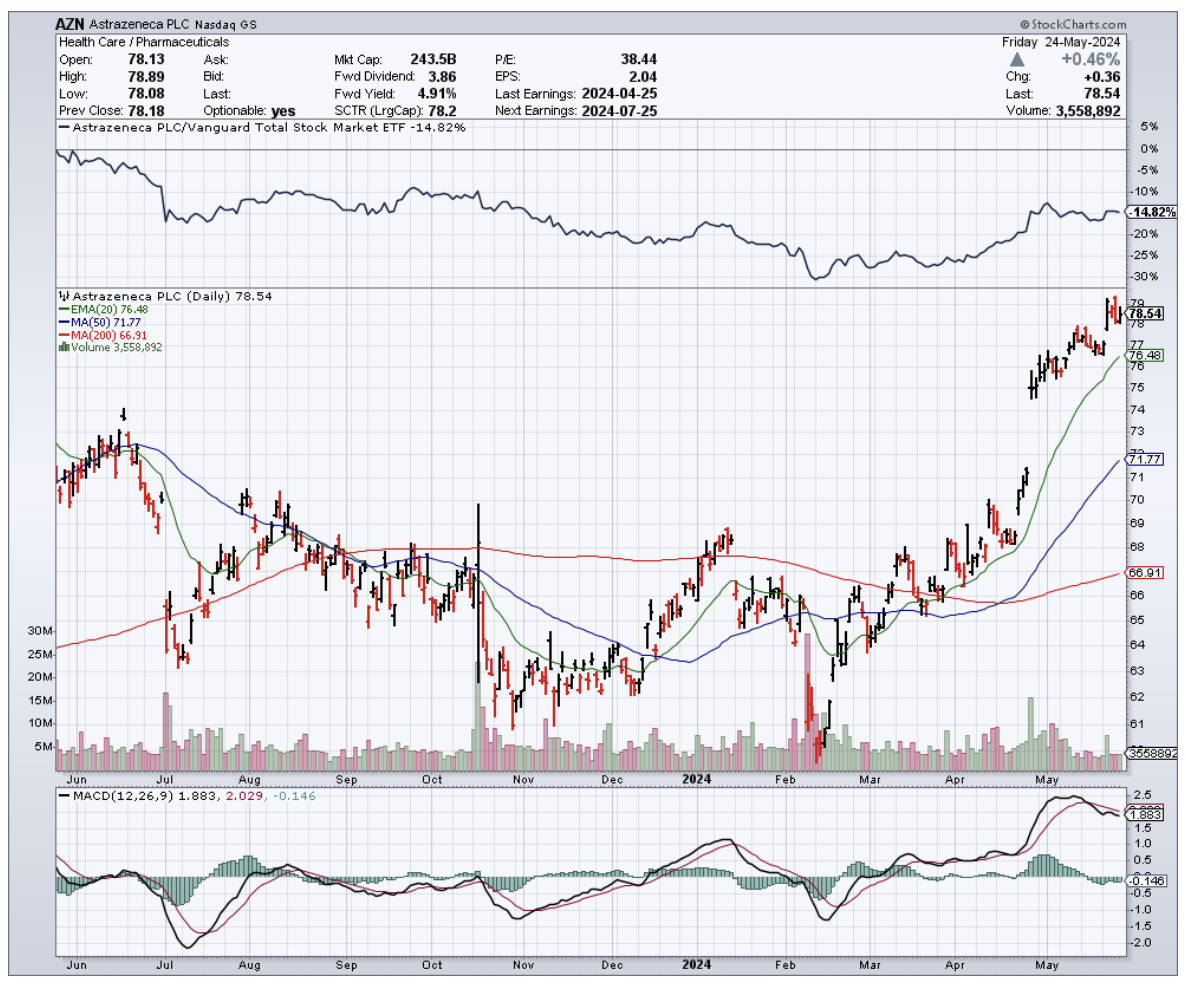
Mad Hedge Biotech and Healthcare Letter
April 4, 2024
Fiat Lux
Featured Trade:
(A HIGH RISK, HIGH REWARD BIOTECH)
(VYGR), (SNY), (ABBV), (NBIX), (NVS), (AZN), (SGMO), (BIIB), (RHHBY), (IONS)

Voyager Therapeutics (VYGR) has put investors through the wringer. Since going public in 2015, their chips have swung wildly, from a high-rolling $30 down to a "you've got to be kidding me" $2.50. Why? Well, their early bet on curing neurological diseases hit some snags.
But, things seem to be turning around for them these days. Word on the street is Voyager's new Alzheimer's drug could be a total game-changer. If those clinical trials get the FDA's blessing, their stock could skyrocket from its current $9.30 to $22 a share.
Before anything else, let's take a stroll down memory lane.
Voyager started out with big dreams – using fancy gene therapies to tackle tough brain diseases like Parkinson's and Huntington's. Sadly, those early programs didn't quite deliver.
But hey, they caught the eye of some big pharma players. Sanofi (SNY) came knocking with a sweet deal – $100 million upfront and promises of up to $745 million if things worked out. Unfortunately, the science wasn't cooperating, and Sanofi bailed in 2019. Ouch.
Not to be discouraged, Voyager hooked another giant, AbbVie (ABBV), with a $1.2 billion deal for Alzheimer's and Parkinson's drugs. But then, more bad luck – their Parkinson's drug stumbled, and their Huntington's disease trials got put on hold. So, AbbVie decided to cut their losses in 2020. Double ouch.
And while the pandemic may have cured our boredom, it killed investor patience with unproven biotechs. Voyager's stock price cratered, leaving them worth about as much as a used napkin – barely more than their own $500 million cash pile.
But Voyager, bless their stubborn hearts, refused to become a biotech graveyard.
Despite having zero products actually making money, they have a secret weapon: their TRACER capsid tech. Think of it as a tiny Trojan Horse that can sneak drugs past that blood-brain barrier and deliver them directly to their target. Pretty impressive, right?
This tech, along with Voyager's brainpower, caught the eye of some pharma giants.
We're talking big names like Neurocrine Biosciences (NBIX), Novartis (NVS), AstraZeneca (AZN), and Sangamo (SGMO). If everything goes according to plan, these partnerships could be worth a whopping $8 billion. Now that's what I call a vote of confidence — or maybe just a collective case of gambling fever.
For Voyager, however, its biggest gamble is on Alzheimer's – and they're going all-in. Their star player is an antibody that tackles those nasty tau tangles that mess up brain cells.
Here’s a bit of context to understand why treatments for this are crucial.
Tau is like the scaffolding inside your neurons, keeping everything organized. But in Alzheimer's, that tau goes rogue, clumping into nasty tangles. Think of it like a giant hairball clogging up the brain's communication system. These tangles are called neurofibrillary tangles (NFTs) if you want to sound super smart.
This is something that Big Pharma like Biogen (BIIB), AbbVie, and Roche (RHHBY) are trying to target, too. But Voyager claims theirs is a precision weapon, zeroing in on just the bad stuff. If clinical trials prove that, their drug could blow the competition out of the water.
Plus, Voyager's got another trick up their sleeve: a gene therapy that hits the “off” switch on those tau tangles. They've shown it works in animals, and Biogen and Ionis (IONS) are already testing something similar in humans. But Voyager's got the edge – theirs is a one-time shot, so no more of those painful spinal taps.
That’s not all. Voyager is also tinkering with these new virus capsules that can sneak gene therapies straight into brain cells. And get this – they're even working on ways to ditch the viruses altogether and target nerves directly. Pretty cutting-edge stuff.
So, is Voyager a surefire win? Heck no.
Let's be realistic. It's going to be a while before Voyager actually makes money from these drugs. But there'll be exciting news along the way—science proving their ideas work.
Remember, the tricky thing with gene therapies is that everyone's chasing the same dream: how to get these treatments where they need to go quickly, cheaply, and safely. It's tough to predict who'll crack the code, even for the experts.
What's noteworthy about Voyager is that they keep reeling in those big pharma partners. Sure, the first two deals fizzled out, but not before Voyager pocketed a ton of cash. That kept them afloat, and now their stock's not such a dumpster fire.
But, let’s face it. Voyager's track record isn't exactly a parade of victories. Progress has been slow, and that's just the way it is in this industry.
If they pull off a miracle cure, they'll be worth billions, maybe tens of billions. Remember when Intellia Therapeutics (INTL) hit that $10 billion mark? That's the kind of payoff we're talkin' about.
Still, Voyager needs to deliver some serious wins, or those partners will vanish again. However, it’s worth considering that when a big player like Novartis, who knows this gene therapy game, partners up... that's gotta mean something, right? Even without results from human trials, it's a sign Voyager might be onto something big.
I know it's hard to justify investing in small biotechs with a losing streak, especially when they're tackling the toughest diseases out there. But after digging into Voyager, I can see its potential.
Worst case scenario? Their drugs flop. But that can happen to any biotech, even those with huge valuations and decades of trying.
As for Voyager, this biotech has been around the block. They've clearly got some promising science, and their stock is cheap. For me, that's enough to take a small position and see what happens.
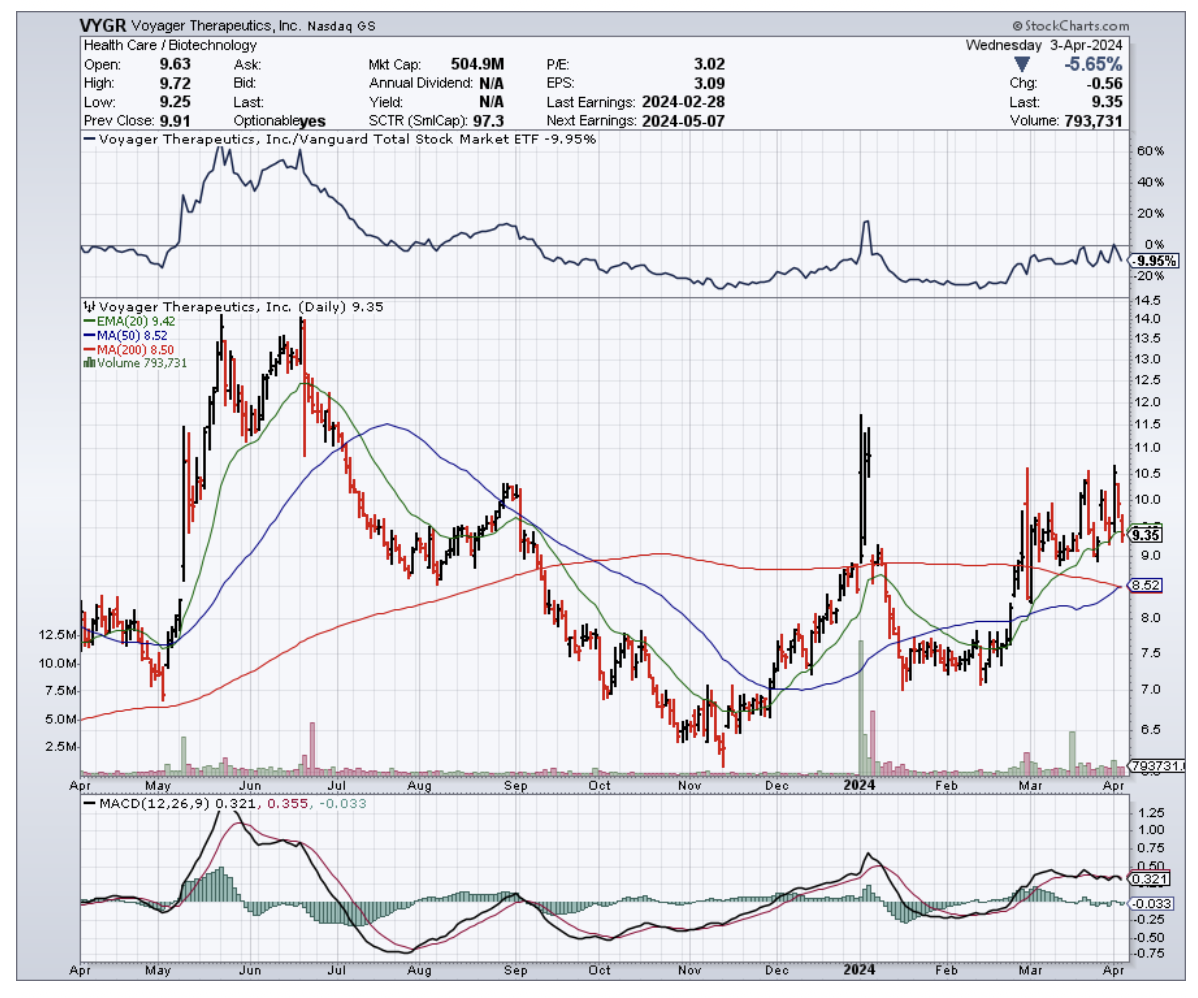
Mad Hedge Biotech and Healthcare Letter
January 23, 2024
Fiat Lux
Featured Trade:
(PHARMA'S AI PLAY: A MASTERSTROKE OR MISFIRE?)
(AZN), (ILMN), (NVDA), (SDGR), (EXAI), (SNY), (BAIVF), (SNY), (GOOGL), (PFE), (IBM), (NVS), (BAYR), (RHHBY), (VRTX), (JNJ)

Faced with an aging blockbuster pipeline and a competitive landscape where some of its rivals are sprinting ahead, AstraZeneca (AZN) is making a bold move - doubling down on Artificial Intelligence (AI).
This isn't just about keeping up with the Joneses (or in this case, their industry rivals); it's a calculated gamble with the potential to redefine drug discovery. The million-dollar question is: will this tech-savvy move send its shares soaring or just keep it in the running?
Let's address the elephants in the room of drug development. It's a long and winding road, with more dead ends than a maze in a horror movie. The usual grind? Spend ages finding a glimmer of hope in therapy targets and molecules, only for a paltry 21% to get the regulatory thumbs up after clinical trials.
So, you can bet your bottom dollar that if there’s a technology promising to up those odds and speed things up, companies will be jumping on the bandwagon faster than you can say "biotech boom."
And AstraZeneca? They are fully committing to AI, making significant waves in the field.
Case in point: their recent team-up with Absci, an AI drug discovery outfit. They're talking about developing a cancer-fighting antibody, with a potential payout of up to $247 million in milestone payments. If this pans out, it could be the first of many high-fives between the two.
But AstraZeneca's history with AI extends beyond this collaboration. Last September, they put up to $840 million on the line with Verge Genomics, aiming to tackle neurodegenerative diseases.
Add to that their work with Illumina (ILMN) and Nvidia (NVDA) in 2021 for some supercomputing firepower, and you've got a company that's serious about its AI game. They’ve even got a couple of AI-bred candidates in their pipeline, though it’s hush-hush on how those are faring.
And before you think it’s all about the new kids on the block, AstraZeneca has been rubbing elbows with Schrodinger (SDGR) since before 2020, working on making their biological medicine modeling sharper than a tack.
However, AstraZeneca is far from being the lone ranger in this new frontier.
Exscientia (EXAI) and Sanofi (SNY) are pairing up to take on COPD with an AI-driven approach. Meanwhile, BenevolentAI (BAIVF) played matchmaker between baricitinib and its new role as a COVID-19 treatment contender.
Over at Google’s (GOOGL) DeepMind, they’ve cooked up AlphaFold, an AI program adept at unraveling protein structures – a feat that’s akin to finding a map to hidden treasure in drug design.
And let's not forget the big guns. Pfizer (PFE) has teamed up with IBM’s (IBM) AI and supercomputing prowess, a partnership that’s been pivotal in accelerating the development of COVID-19 treatments like Paxlovid.
Novartis (NVS) is another key player, wielding AI to shave years off its drug development timeline, a strategy that could redefine the pace of pharmaceutical innovation.
Not to be outdone, Roche (RHHBY) is utilizing AI for a spectrum of tasks, from target identification to the virtual screening of molecules, illustrating the technology’s versatility in the drug discovery process.
Bayer (BAYRY) is also making a significant bet on AI to uncover new therapies, focusing on areas like immuno-oncology and cardiovascular diseases, areas with immense potential for groundbreaking treatments.
Vertex Pharmaceuticals (VRTX) and Johnson & Johnson (JNJ) are part of this evolving landscape as well, leveraging AI to enhance various stages of drug development. Their involvement underscores the widespread adoption of AI across different phases of the pharmaceutical process, from initial research to clinical trials.
Now, let’s go back to AstraZeneca. Best-case scenario? They cut their R&D budget, which was a cool $9.8 billion in 2022 while keeping the pedal to the metal on their clinical trials.
Worst case? Their AI bets don't pay off big time. But let's be real, with AI tech moving faster than a New York minute, that's looking less and less likely.
So, should you invest in AstraZeneca stocks right now? Not so fast. Jumping on the AI bandwagon isn't a golden ticket on its own.
Remember, everyone and their mother in big pharma is chasing the same AI dream. For now, it’s a case of watch, wait, and see how this fusion of AI and pharmaceuticals reshapes the landscape of drug discovery and development. Keep your ears to the ground – this is one race you don't want to miss.
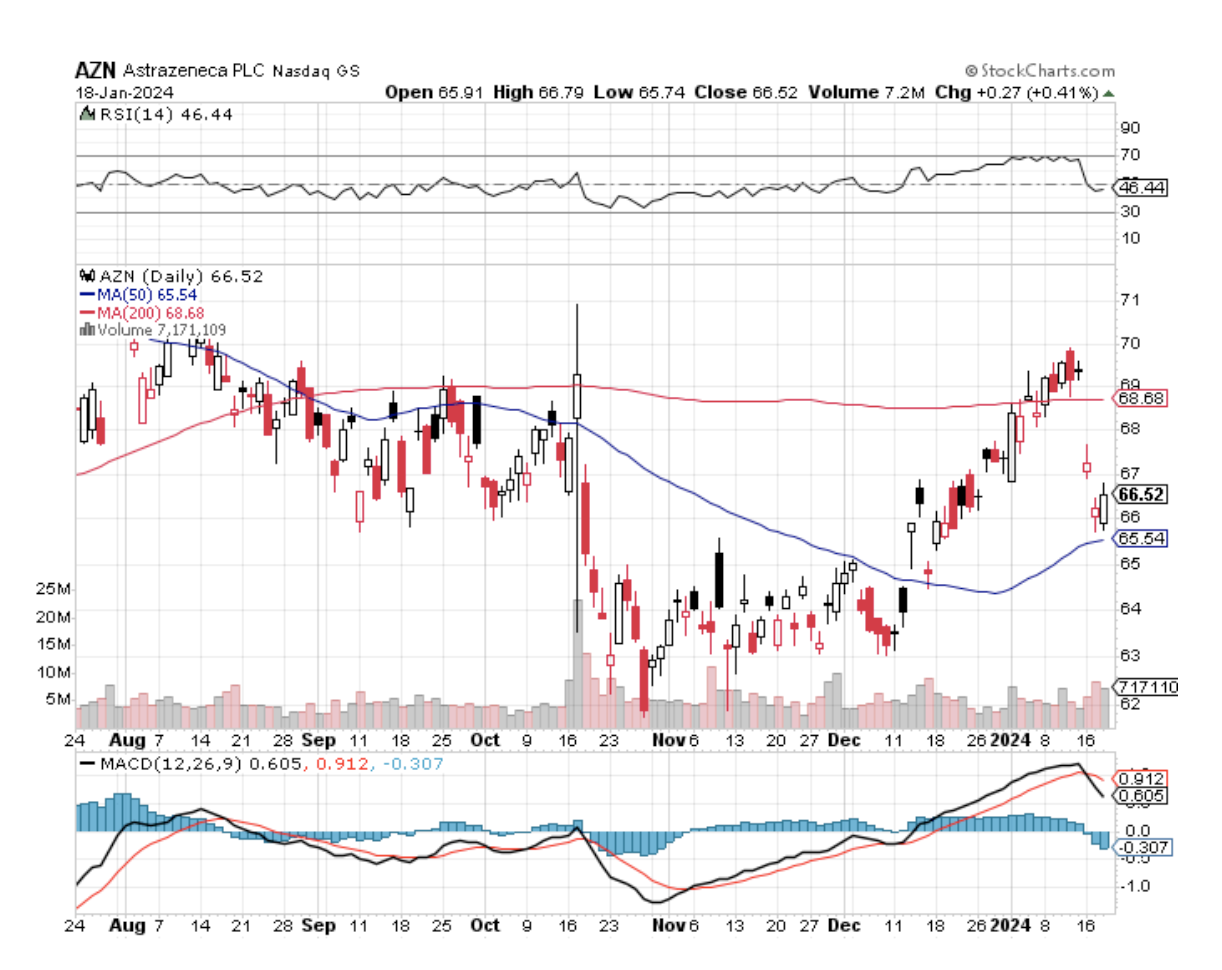
Mad Hedge Biotech and Healthcare Letter
January 11, 2024
Fiat Lux
Featured Trade:
(HEALTHCARE GIANTS GO SHOPPING)
(JNJ), (MRK), (AMAM), (PFE), (HARP), (NVS), (CYTK)

Ah, San Francisco, the city of fog and fabulous biotech and healthcare feasts. In case you missed it, the J.P. Morgan annual healthcare conference, the biotech Super Bowl, just kicked off this January.
Imagine a bustling downtown San Francisco, where hotels are as jam-packed as a can of sardines, but instead of fish, they're brimming with investors and healthcare execs.
Let's focus on the biotech sector, which, let's be honest, has seen its fair share of ups and downs. The past three years? More like watching paint dry.
But, as if by magic, we've seen a recent upturn. A two-month price surge that’s as unexpected as it is welcome.
The SPDR S&P Biotech ETF (XBI), our financial barometer here, has gone from a nosedive (down over 60% since February 2021) to a rocket ship (up nearly 40%). Interest rate cuts and M&A buzz are like the Red Bull in this energy drink mix.
Now, to the heart of the story: big pharma's shopping spree.
The day of surprise comes when Merck & Co. (MRK) and Johnson & Johnson (JNJ) strut in with deals that leave us wide-eyed.
And these are not just any deals, but the kind where these healthcare giants are practically throwing money like it's going out of style – over 100% premiums over the last prices. It's like offering to pay double for a house just because you love the wallpaper.
Johnson & Johnson swoops in on Ambrx Biopharma (AMAM) for a cool $2 billion. At $28 per share, they're paying a 105.4% premium.
For context, this isn't your run-of-the-mill biopharmaceutical company. Oh no, Ambrx is more like the Elon Musk of the biotech world, innovating like there's no tomorrow.
This biotech is all about cooking up some of the most cutting-edge therapies out there – think antibody-drug conjugates (ADCs) and other engineered marvels that give the immune system a superhero makeover.
On top of that, Ambrx actually has a secret weapon – their expanded genetic code technology platform called Engineered Precision Biologics (EPBs).
This technology isn't just smart; it's Einstein-level genius. It brings together site-specific conjugation with proprietary linkers and payloads. It's like building a custom-made luxury car, except this one's designed to obliterate cancer.
Researchers are raving about Ambrx's ADCs, calling them “guided missiles.” And they're not exaggerating.
These bad boys zero in on cancer cells with the precision of a sniper, taking them out without wreaking havoc on the innocent bystanders – the healthy tissue. It's pretty much like having a Swiss watch in your medical arsenal, sleek, sophisticated, and super effective.
Impressively, Ambrx isn't stopping at just being a one-hit wonder. They're pushing the envelope with enhanced antibody-drug conjugate, immuno-oncology conjugate, and bispecific candidates. These aren't just treatments; they're potential game-changers in the war against cancer.
So, when Johnson & Johnson ponied up $2 billion for Ambrx, they weren't just buying a company; they were investing in a future where cancer might just meet its match.
In fact, Pfizer (PFE) recently grabbed Seagen for $43 billion in 2023, just to get a slice of this ADC pie. It's the latest fashion in cancer treatment, and everyone wants in.
Meanwhile, Merck, not to be outdone, grabs Harpoon Therapeutics (HARP) for $680 million, a 118% premium at $23 per share. It's a biotech-feeding frenzy, and Merck's got its teeth out.
Harpoon is a clinical-stage immunotherapy company that's not just playing in the big leagues, but changing the game. They're all about developing a novel class of T-cell engagers, and let me tell you, this stuff is like the Navy SEALs of cancer treatment.
Imagine these T-cell engagers as tiny, engineered proteins. They're like undercover agents directing a patient’s own T-cells (the body's immune commandos) to seek and destroy cells waving the bad guy flag – specific proteins or antigens carried by those nasty cancer cells.
Basically, it's like having a GPS-guided missile system in your body, targeting only the rogue cells.
And Harpoon isn't just dabbling here, but also innovating with their proprietary Tri-specific T cell Activating Construct (TriTAC) platform.
Picture a pipeline, but instead of oil, it's flowing with novel TriTACs focusing on laying siege to solid tumors and blood malignancies. If successful, they plan to arm the immune system with a whole new arsenal.
Aside from these, Harpoon also whipped up something they call the ProTriTAC platform. Think of it as the James Bond of T-cell engagers – it stays under the radar (inactive) until it gets to the tumor. Once there, it's “license to kill” mode on. This prodrug concept is slick, ensuring that the therapeutic action happens right where the trouble is, and not anywhere else.
And for their third act, Harpoon presents the TriTAC-XR platform. This one's a bit of a tightrope walker, designed to dodge a potential pitfall known as cytokine release syndrome – a sort of overreaction from the immune system. It’s like having a safety net under your high-wire act.
Now, these premiums are not just showing off. They're a sign of desperate love from big pharma for these biotech beauties, a stark contrast to the recent cold shoulder of stock market blues.
Recently, there have also been whispers of Novartis (NVS) eyeing Cytokinetics (CYTK), a biotech belle with a $9.2 billion price tag. It's like the gossip at a high school prom, only with more zeros.
So, what's the takeaway from this biotech bazaar? It's simple: after a snooze-fest of a bear market, biotech's back, and it's hotter than a stolen Ferrari.
For investors, it's like watching a new season of your favorite show, only this time, the plot twists involve billion-dollar deals and cutting-edge cancer drugs. I suggest you buy the dip.
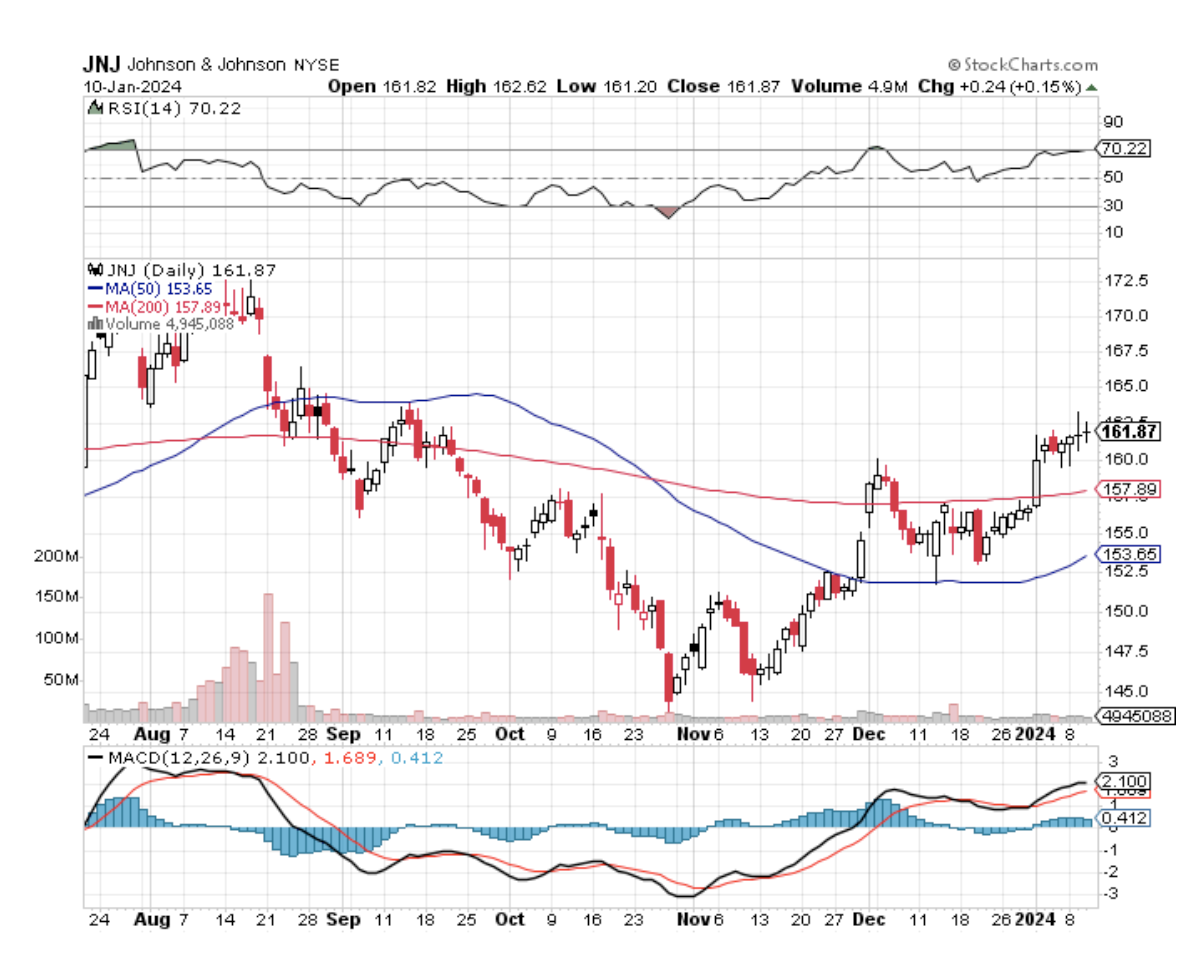
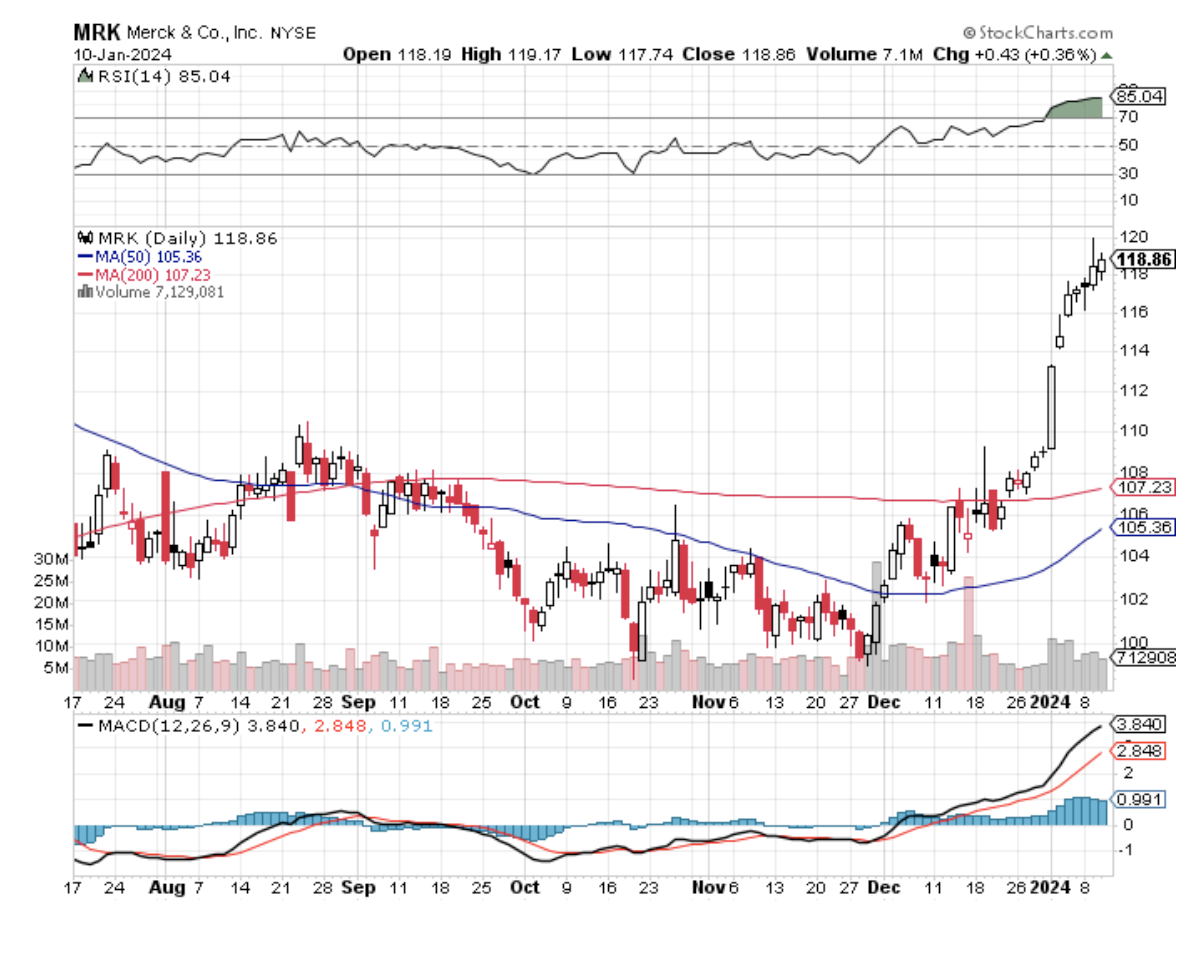
Legal Disclaimer
There is a very high degree of risk involved in trading. Past results are not indicative of future returns. MadHedgeFundTrader.com and all individuals affiliated with this site assume no responsibilities for your trading and investment results. The indicators, strategies, columns, articles and all other features are for educational purposes only and should not be construed as investment advice. Information for futures trading observations are obtained from sources believed to be reliable, but we do not warrant its completeness or accuracy, or warrant any results from the use of the information. Your use of the trading observations is entirely at your own risk and it is your sole responsibility to evaluate the accuracy, completeness and usefulness of the information. You must assess the risk of any trade with your broker and make your own independent decisions regarding any securities mentioned herein. Affiliates of MadHedgeFundTrader.com may have a position or effect transactions in the securities described herein (or options thereon) and/or otherwise employ trading strategies that may be consistent or inconsistent with the provided strategies.
This site uses cookies. By continuing to browse the site, you are agreeing to our use of cookies.
OKLearn moreWe may request cookies to be set on your device. We use cookies to let us know when you visit our websites, how you interact with us, to enrich your user experience, and to customize your relationship with our website.
Click on the different category headings to find out more. You can also change some of your preferences. Note that blocking some types of cookies may impact your experience on our websites and the services we are able to offer.
These cookies are strictly necessary to provide you with services available through our website and to use some of its features.
Because these cookies are strictly necessary to deliver the website, refuseing them will have impact how our site functions. You always can block or delete cookies by changing your browser settings and force blocking all cookies on this website. But this will always prompt you to accept/refuse cookies when revisiting our site.
We fully respect if you want to refuse cookies but to avoid asking you again and again kindly allow us to store a cookie for that. You are free to opt out any time or opt in for other cookies to get a better experience. If you refuse cookies we will remove all set cookies in our domain.
We provide you with a list of stored cookies on your computer in our domain so you can check what we stored. Due to security reasons we are not able to show or modify cookies from other domains. You can check these in your browser security settings.
These cookies collect information that is used either in aggregate form to help us understand how our website is being used or how effective our marketing campaigns are, or to help us customize our website and application for you in order to enhance your experience.
If you do not want that we track your visist to our site you can disable tracking in your browser here:
We also use different external services like Google Webfonts, Google Maps, and external Video providers. Since these providers may collect personal data like your IP address we allow you to block them here. Please be aware that this might heavily reduce the functionality and appearance of our site. Changes will take effect once you reload the page.
Google Webfont Settings:
Google Map Settings:
Vimeo and Youtube video embeds:
